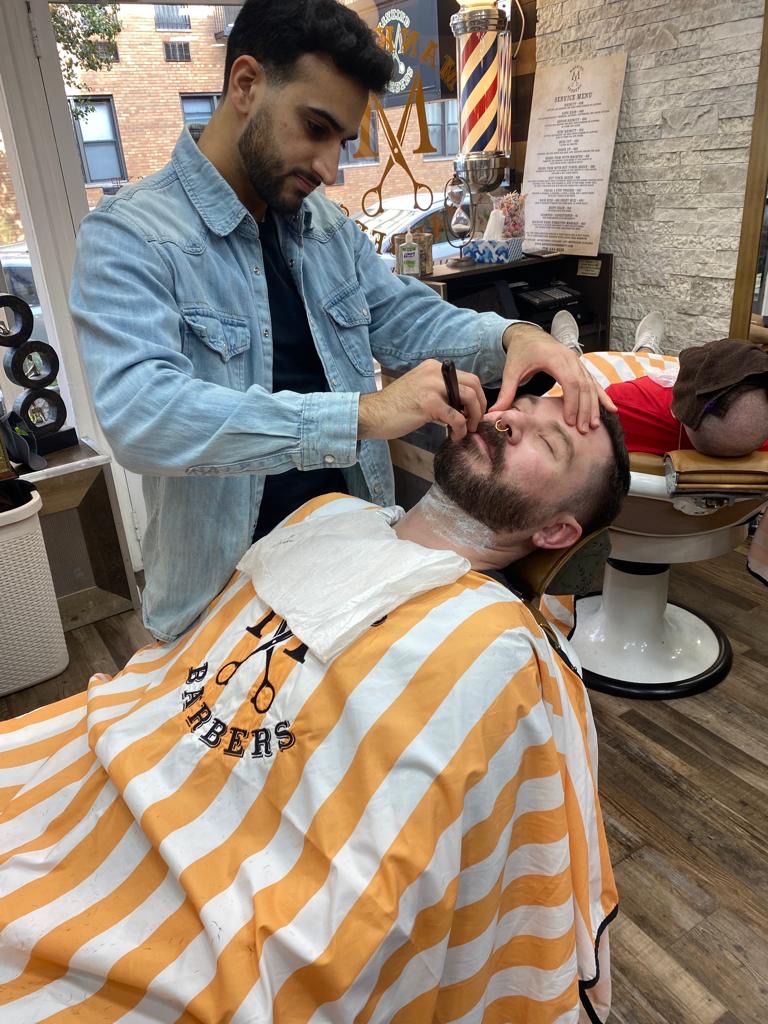Frequently Asked Questions
The angle of the blade in a straight razor significantly influences the closeness of the shave by determining the blade's interaction with the hair follicles and skin surface. A lower angle, typically around 15 to 30 degrees, allows the blade to slice through the hair with minimal resistance, effectively reducing the risk of tugging and irritation while maximizing the efficiency of the cut. This acute angle facilitates a more aggressive approach, enabling the blade to glide smoothly over the skin, which can lead to a closer shave. Conversely, a higher angle may result in a less effective cutting action, potentially leaving behind stubble and increasing the likelihood of razor burn or nicks. Additionally, the angle affects the blade's exposure and the pressure applied during the shave, which are critical factors in achieving optimal results. Therefore, mastering the angle of the blade is essential for achieving a precise, comfortable, and ultra-close shave, making it a vital consideration for enthusiasts of traditional wet shaving techniques.
To minimize skin irritation during shaving with a straight razor, several techniques can be employed that focus on preparation, technique, and aftercare. First, proper pre-shave preparation is crucial; this includes cleansing the skin with a gentle exfoliating scrub to remove dead skin cells and using a high-quality pre-shave oil to create a protective barrier. The application of a rich, moisturizing shaving cream or soap, ideally one that contains soothing ingredients like aloe vera or shea butter, can enhance glide and reduce friction. During the shave, maintaining a consistent angle of approximately 30 degrees and using light, short strokes can help prevent tugging and pulling on the skin, which often leads to irritation. It is also beneficial to shave in the direction of hair growth, known as the grain, to minimize the risk of ingrown hairs and razor burn. After shaving, applying a soothing aftershave balm or lotion that contains anti-inflammatory agents, such as witch hazel or chamomile, can further calm the skin and promote healing. Additionally, ensuring that the straight razor is well-maintained, with a properly honed edge, is essential for achieving a close shave without excessive pressure, thereby reducing the likelihood of nicks and cuts that contribute to irritation.
The weight and balance of a straight razor significantly influence the shaving experience and the closeness of the shave compared to a safety razor. A straight razor, typically crafted from high-carbon steel, boasts a heavier blade that allows for a more controlled and precise glide across the skin, facilitating a closer cut by utilizing the full edge of the blade without the need for multiple passes. This weight distribution enhances the user's ability to maintain optimal angle and pressure, reducing the risk of irritation and razor burn. In contrast, safety razors, which often feature a lighter head and a replaceable double-edged blade, provide a different dynamic; while they offer convenience and safety, the lighter weight can sometimes lead to less control, potentially resulting in a less intimate shave. The balance of a straight razor, combined with the skill required for its use, allows for a more personalized shaving technique, often resulting in a superior closeness that aficionados of traditional wet shaving appreciate. Ultimately, the choice between these two types of razors hinges on the user's preference for weight, balance, and the desired closeness of the shave.
When it comes to achieving the closest shave with a straight razor, the choice of blade material and design plays a crucial role. High-carbon steel blades are often favored for their superior edge retention and ability to be honed to a fine, sharp edge, allowing for a smooth glide across the skin. Additionally, stainless steel blades provide excellent corrosion resistance and durability, making them a popular choice among enthusiasts. The grind of the blade, such as full hollow or quarter hollow, also significantly impacts the shaving experience; full hollow grinds are known for their flexibility and ability to conform to the contours of the face, while quarter hollow grinds offer more rigidity and stability. Furthermore, the width of the blade, typically ranging from 5/8 to 7/8 inches, can influence the closeness of the shave, with wider blades often providing a more aggressive cut. Ultimately, the combination of these factors—material, grind, and width—determines the effectiveness of a straight razor in delivering an exceptionally close and comfortable shave.
The maintenance of a straight razor significantly influences its performance when compared to a safety razor, primarily due to the intricacies involved in honing, stropping, and overall care. A straight razor requires regular honing on a whetstone to maintain its edge, ensuring optimal sharpness and precision during shaving, while also necessitating frequent stropping on leather to realign the microscopic teeth of the blade. This meticulous upkeep not only enhances the blade's longevity but also contributes to a smoother, closer shave, as the user can achieve a customized angle and pressure. In contrast, a safety razor, which typically utilizes disposable blades, demands less intensive maintenance, as the blades can be easily replaced without the need for specialized sharpening techniques. However, the performance of a safety razor can be influenced by the quality of the blades and the design of the razor itself, which may not provide the same level of control and personalization that a well-maintained straight razor offers. Ultimately, the commitment to maintaining a straight razor elevates the shaving experience, allowing for a superior level of craftsmanship and satisfaction that is often sought after by traditional shaving enthusiasts.

